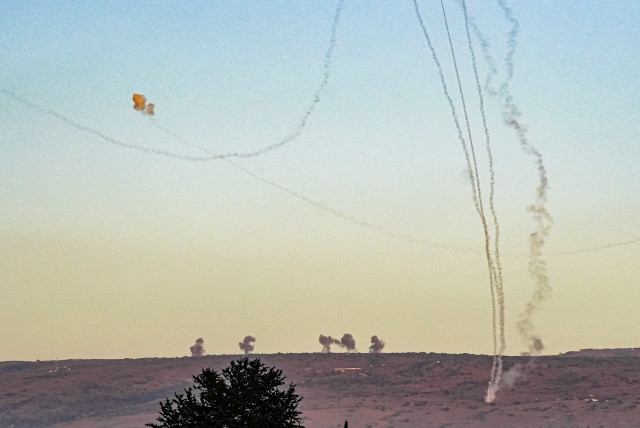Iran wants a ‘perfect storm’ to threaten Israel with proxies - analysis

Iran’s goal of escalation amid the Rafah offensive has therefore not come to the fruition that Iran wanted.
Iran has sought to increase the use of terrorist proxies to attack Israel, particularly in the wake of the Rafah offensive. So far, these attempts have not been very successful, though several drones were launched by pro-Iranian militias in Iraq, as Iran continues to use the Houthis in Yemen to attack ships.
The Iraqi militias attacks generally involve the launch of singular drones and although the drones could do damage if they impacted something, they usually fail to get to Israel or are intercepted.
At the same time, the Houthis continue to face off against US naval forces in the Red Sea. According to US Central Command (USCENTCOM), on Monday, “Iranian-backed Houthi terrorists launched three uncrewed aerial systems (UAS) over the Gulf of Aden from Houthi-controlled areas in Yemen. A coalition ship successfully engaged one UAS, USCENTCOM forces engaged the second UAS, and the final UAS crashed in the Gulf of Aden. There were no injuries or damages reported by US, coalition, or merchant vessels.” Then, on Tuesday, the Houthis launched a ballistic missile into the Gulf of Aden.
Threats from multiple fronts
Pro-Iranian media suggested that if Israel entered Rafah, it would create a “perfect storm” for Israel to face heavy threats on multiple fronts. So far though, these threats have not materialized the way Iran envisioned. For instance, Hezbollah did increase attacks between Sunday and Wednesday, launching dozens of rockets, and setting off alarms in the Galilee around mid-morning. A half-hour later, sirens sounded near Shlomi and Nahariya.
These are all areas Hezbollah targets often, meaning it is thus far using the same playbook. The major deviation was a series of drone attacks by Hezbollah on Monday and Tuesday, killing two IDF soldiers on Monday.
This is a serious escalation. However, Hezbollah appeared to climb down from a more intense escalation on Wednesday. The terrorist group appears to prefer the kind of proportional attacks that it has carried out for seven months now, destroying communities in the North, but not yet crossing the line into a wider war. Iran’s goal of escalation amid the limited Rafah offensive has therefore not come to the fruition Iran wanted. It remains to be seen if Iran and its proxies will change their tune over the weekend.
Jerusalem Post Store
`; document.getElementById("linkPremium").innerHTML = cont; var divWithLink = document.getElementById("premium-link"); if (divWithLink !== null && divWithLink !== 'undefined') { divWithLink.style.border = "solid 1px #cb0f3e"; divWithLink.style.textAlign = "center"; divWithLink.style.marginBottom = "15px"; divWithLink.style.marginTop = "15px"; divWithLink.style.width = "100%"; divWithLink.style.backgroundColor = "#122952"; divWithLink.style.color = "#ffffff"; divWithLink.style.lineHeight = "1.5"; } } (function (v, i) { });

